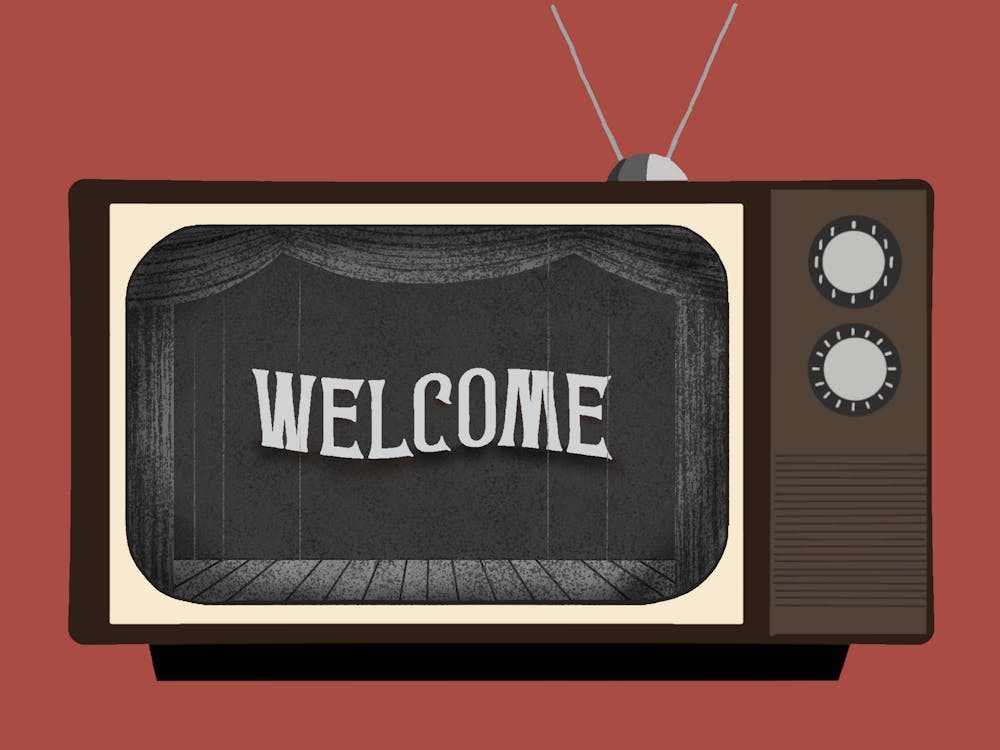FADE IN — on the start of a new year. Much like the first day of school, the first scene of a film carries a great deal of weight on its shoulders. Audiences both require a clear explanation of exactly what they are about to see, yet also want to be wholly surprised by the respective twists and turns of each film.
The greatest opening scenes are the ones that accomplish this balancing act –– they orient without overexplaining, entertain without exhausting and compel enough to capture their audience’s attention span by the time the credits roll.
With that in mind, when pressing play on the new school year, do the same for the cinema –– with the best opening scenes from the 1970s to the present.
1970s –– “Jaws"
Steven Spielberg’s 1975 masterclass in cinema opens with a sequence that, in just over five minutes, establishes the film’s central terror without ever showing it. As a young woman goes for a swim that quickly turns bloody, what begins as a simple small-town scene quickly transforms into an episode of visceral dread. Simple but frighteningly effective, the mastery of this horror is contingent less on the presence of the monster itself than on the vulnerability its attack exposes. In such a way, Spielberg thus foregrounds a central theme in the film –– that fear is as much psychological as it is physical.
1980s –– “Back to the Future”
Few openings announce a film’s energy as clearly as 1985’s “Back to the Future.” In a single shot tracking through a crowded workshop, the camera glides past clocks, inventions and news reports, expertly planting narrative seeds without a line of exposition. As Marty McFly flips an amplifier switch, the film then catapults to life with a burst of chaotic comedy that encapsulates its blend of the slapstick with the spectacular. In under 5 minutes, director Robert Zemeckis has established the film’s protagonists, its eccentricities and its fascinations –– setting the stage for an adventure where skateboards hold just as much weight as the space-time continuum.
1990s –– “Scream”
The first entry in a now-iconic horror franchise, the original "Scream" delivers a masterclass in suspense, satire and shock value, as a playful phone call to Drew Barrymore’s character quickly spirals into a sadistic game of movie trivia with her life on the line. Director Wes Craven weaponizes the familiar tropes of slasher cinema with a self-aware wink –– only to pull the rug out by killing off his star before the credits even roll. This iconic opening not only cemented Barrymore as a bonafide movie star, but cemented the “Scream” franchise as a rule-breaking reinvention of modern horror filmmaking.
2000s –– “The Dark Knight”
The 2008 entry in Christopher Nolan’s Batman trilogy stands not only as one of the best superhero movies of all time, but one that completely flipped the genre on its axis. Such innovation is evident from the film’s opening notes, as a bank robbery is executed with chilling precision –– each criminal eliminating his partner after their task is complete. In the ultimate unmasking of Heath Ledger, the Joker is thus introduced not merely a looming villain but an active architect of villainy. This opening sequence offers a distilled thesis statement on Nolan’s vision of Gotham, a place where trust is as fragile as a grenade –– or a smoke bomb, as the case may be.
2010s –– “The Social Network”
In perhaps the most brilliant piece of screenwriting of the 21st century, the opening scene of “The Social Network” finds Mark Zuckerberg and his girlfriend at a dimly lit Boston dive bar on what begins as a casual date. In nine pages of biting, rapid-fire dialogue –– rumored to have required 99 takes –– Jesse Eisenberg and Rooney Mara deliver an acute exploration of ambition and fragility that serves as a case study in character set-up. In just one exchange, the film lays down its central themes of ambition and insecurity and sets the tone for the 2 hours to follow.
2020s –– “Tenet”
Christopher Nolan opens his criminally underrated 2020 thriller with a lesson in entropy, as a packed Kyiv opera house is stormed by masked gunmen. But what first looks like a conventional hostage crisis almost immediately begins to fracture under the film’s signature conceit, as bullets fire in reverse and time itself moves backwards. In classic Nolan tradition, the director shows first and tells never, with an opener that doubles as a mission statement for one of the most audacious blockbusters of the decade.
Both the first moments of a school year and the first moments of a film are integral in shaping the moments to come. In their masterful celebration of the start of something new, these scenes from the past six decades are a reminder that a good beginning –– whether on screen or on Grounds –– makes for the best ending.







